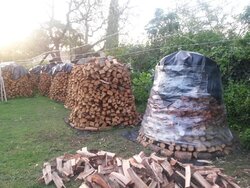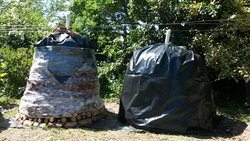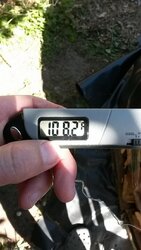I am currently splitting some black wattle with a serious ALB infestation. Some splits have up to 10 small larvae crawling all over. Fortunately the bluegum is clean. Must be the eucalyptus oil.
So I did some reading and it seems that making a solar kiln might kill off the bugs. We are heading for our African summer and soon should have some 90°F plus days. I got some cling wrap from a friend and covered the holzhausen with it. I also added some mothballs and ammonia for good measure. I will check after a few months to see whether it has worked. I have enough rounds left for another HH, so will have 2 kilns going soon.
So I did some reading and it seems that making a solar kiln might kill off the bugs. We are heading for our African summer and soon should have some 90°F plus days. I got some cling wrap from a friend and covered the holzhausen with it. I also added some mothballs and ammonia for good measure. I will check after a few months to see whether it has worked. I have enough rounds left for another HH, so will have 2 kilns going soon.





